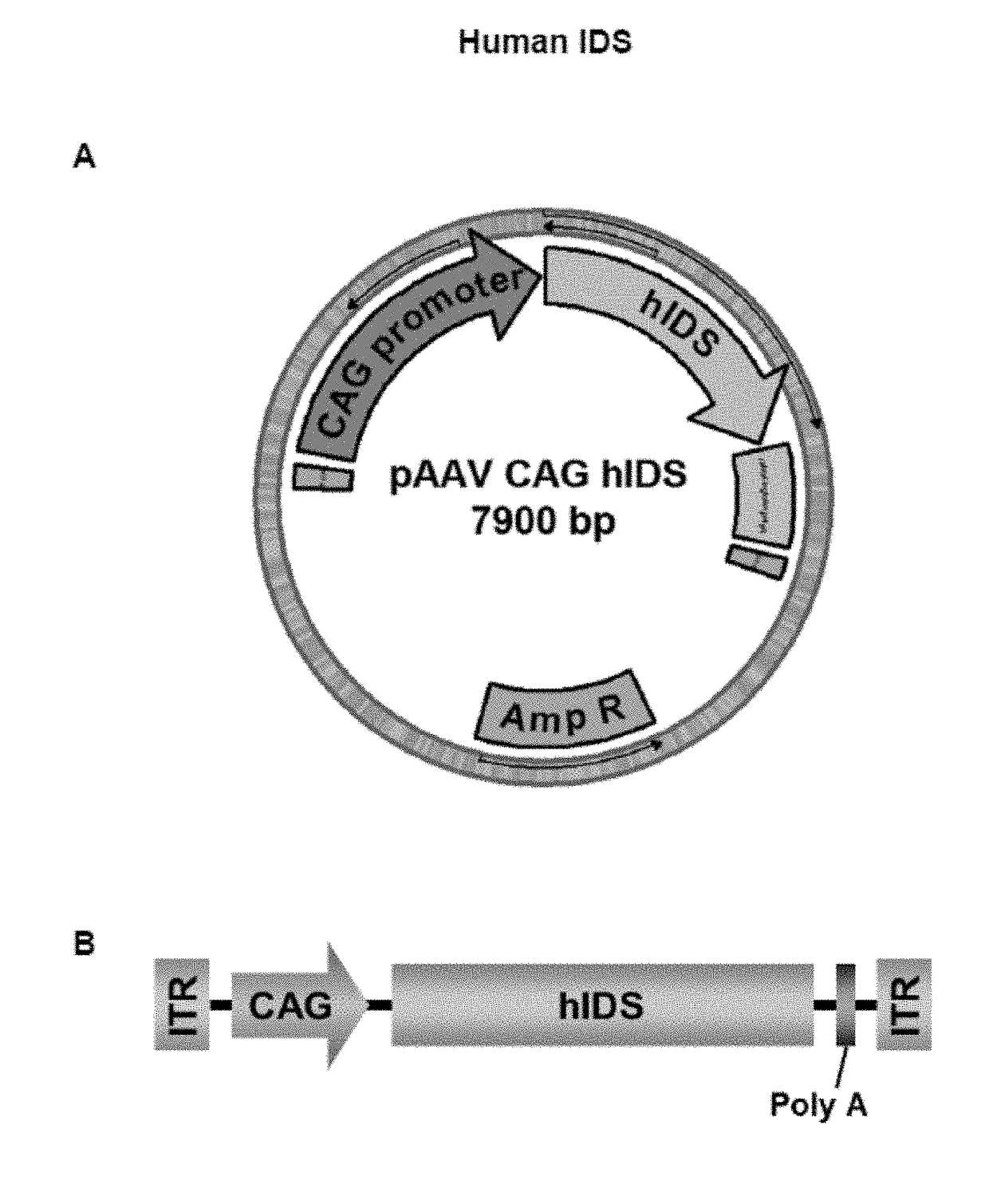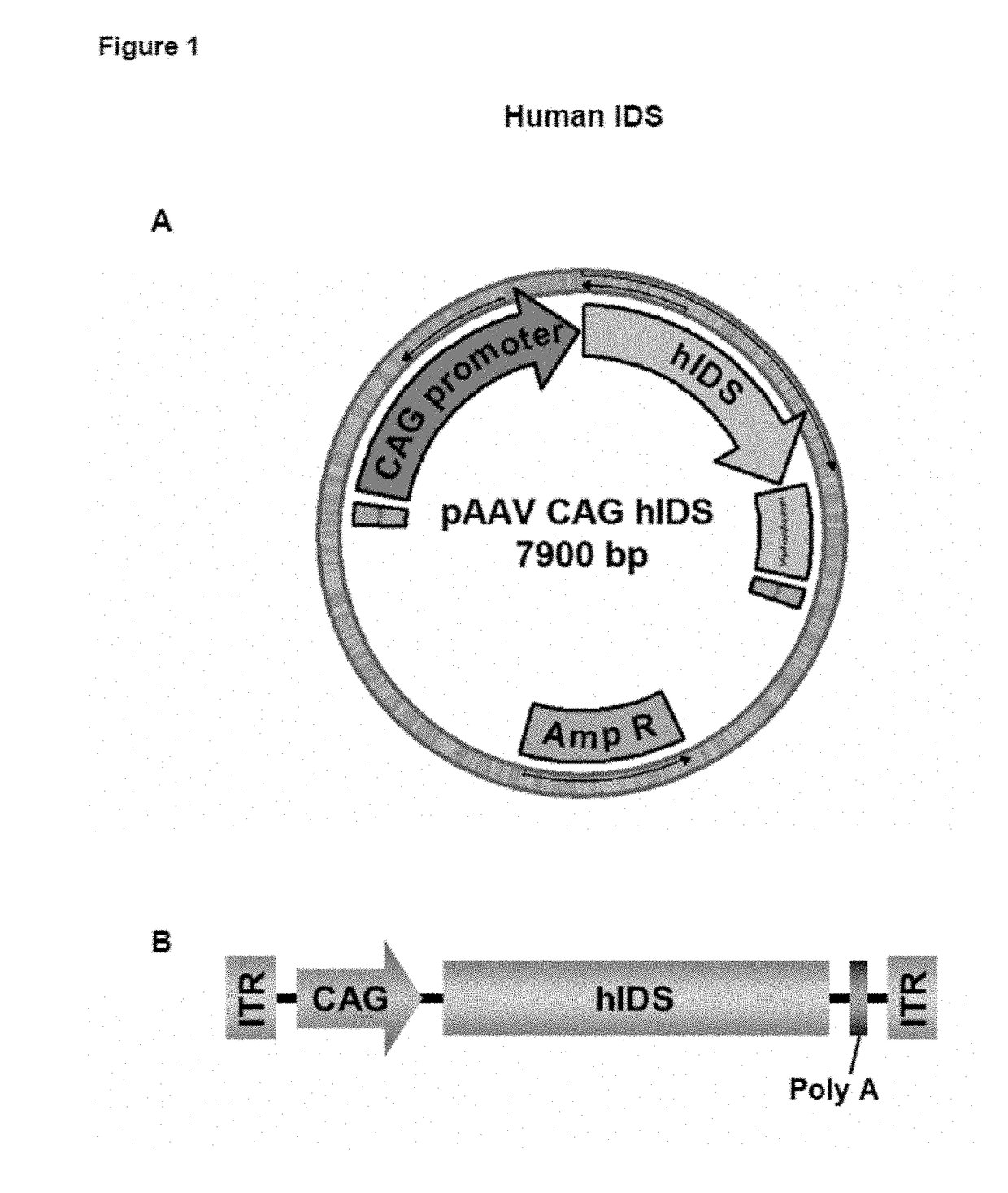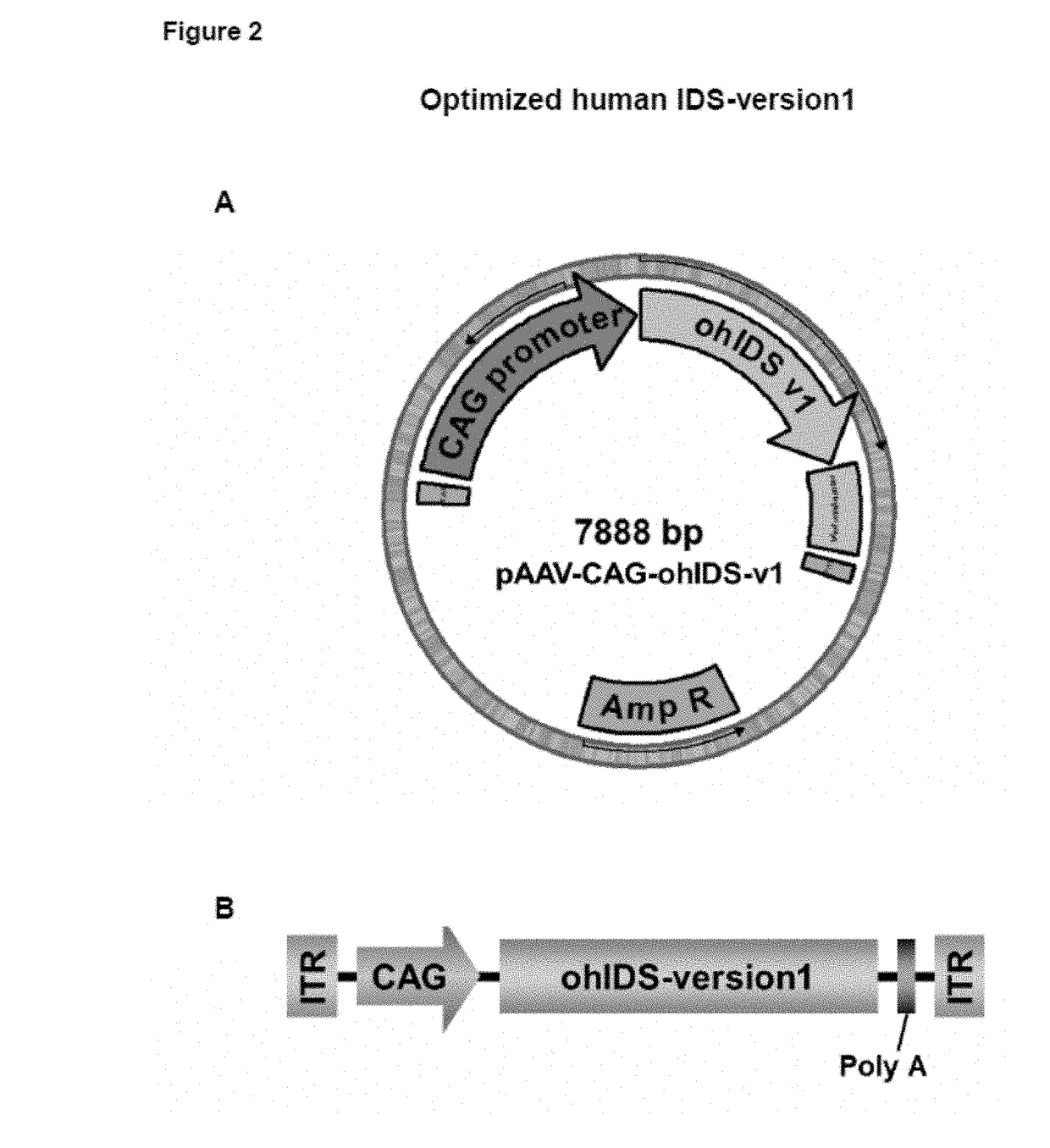Adenoassociated virus vectors for the treatment of mucopolysaccharidoses
a technology of adenoassociated virus and mucopolysaccharidose, which is applied in the direction of viruses/bacteriophages, drug compositions, genetic material ingredients, etc., can solve the problems of normal activity, urine gag excretion, and particularly afflicted groups of general population
- Summary
- Abstract
- Description
- Claims
- Application Information
AI Technical Summary
Benefits of technology
Problems solved by technology
Method used
Image
Examples
example 1
ion of pAAV-CAG-hIDS
[0137]The CDS for human Iduronate-2-sulfatase was utilized as starting material (NCBI Reference Sequence: NM_000202.6) and chemically synthetized for this purpose (GenScript Inc). The CDS was received cloned inside the plasmid pUC57_(AmpR) flanked by Swal restriction sites.
[0138]The Swal-Swal human Iduronate-2-sulfatase CDS fragment was excised from the pUC57 plasmid and subsequently cloned between the MluI and EcoRI restrictions sites of the AAV backbone plasmid pAAV-CAG after rendering the 5′ and 3′ overhangs blunt with Klenow fragment (Fermentas). The resulting plasmid was named pAAV-CAG-hIDS (accession number DSM 29866). See FIG. 1A and SEQ ID NO:3.
[0139]The pAAV-CAG plasmid had been previously generated and contained the ITRs from the AAV2 genome, the CAG promoter, and the polyA signal from rabbit β-globin, as well as a multicloning site for cloning of CDSs of interest. The CAG promoter is a hybrid promoter composed of the CMV early / intermediate enhancer and...
example 2
ion of pAAV-CAG-ohIDS-Version1
[0140]Expression cassettes including an optimized version of human Iduronate-2-sulfatase cDNA sequence (ohIDS) were designed and obtained. The sequence optimization was performed to maximize the efficiency of Iduronate-2-sulfatase protein production in human beings through elimination of cryptic splice sites and RNA destabilizing sequence elements for increased RNA stability, addition of RNA stabilizing sequence elements, codon optimization and G / C content adaptation, avoidance of stable RNA secondary structures amongst others changes. The CDS for human Iduronate-2-sulfatase (NCBI Reference Sequence: NM_000202.6) was used as starting point for sequence optimization (DNA 2.0 Inc). The optimized CDS was received cloned inside the plasmid pJ204:191476 (AmpR) flanked by MluI and EcoRI restriction sites at 5′ and 3′, respectively.
[0141]The MluI / EcoRI optimized human Iduronate-2-sulfatase CDS fragment was excised from the pJ204:191476 plasmid and subsequently...
example 3
ion of pAAV-CAG-ohIDS-Version2
[0142]The CDS for human Iduronate-2-sulfatase (NCBI Reference Sequence: NM_000202.6) was subjected to sequence optimization (GeneScript Inc). The optimized CDS was received cloned inside the plasmid pUC57 (AmpR) flanked by MluI and EcoRI restriction sites at 5′ and 3′, respectively.
[0143]The pUC57-ohIDS plasmid was digested with MluI and EcoRI to excise the optimized Iduronate-2-sulfatase CDS. Subsequently, this fragment was cloned between the same restriction sites of the pAAV-CAG backbone plasmid to generate the pAAV-CAG-ohIDS-version2 plasmid (accession number DSM 29868). See FIG. 3A and SEQ ID NO:9.
PUM
| Property | Measurement | Unit |
|---|---|---|
| pH | aaaaa | aaaaa |
| pharmaceutical composition | aaaaa | aaaaa |
| acid hydrolases | aaaaa | aaaaa |
Abstract
Description
Claims
Application Information
 Login to View More
Login to View More - R&D
- Intellectual Property
- Life Sciences
- Materials
- Tech Scout
- Unparalleled Data Quality
- Higher Quality Content
- 60% Fewer Hallucinations
Browse by: Latest US Patents, China's latest patents, Technical Efficacy Thesaurus, Application Domain, Technology Topic, Popular Technical Reports.
© 2025 PatSnap. All rights reserved.Legal|Privacy policy|Modern Slavery Act Transparency Statement|Sitemap|About US| Contact US: help@patsnap.com



